|
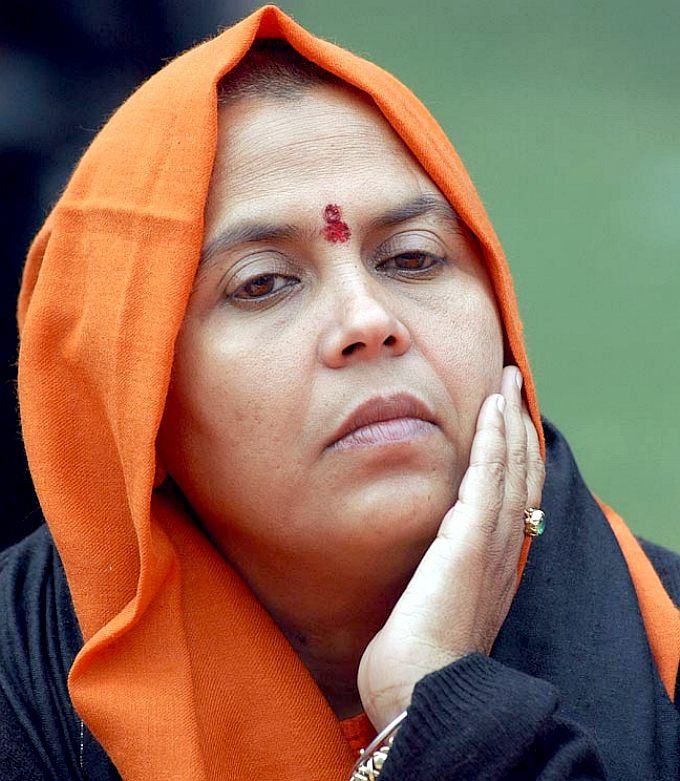
UMA
BHARTI MP - Union Water Resources Minister Uma Bharti today (20-8-14) said that efforts are being made to rejuvenate the river in three years, for which steps would be taken to address the problem of pollution from industries and sewage.
Cleaning the Ganga is a task of such magnitude that many ministers would
not undertake it. We applaud the minister for agreeing to see what might
be done.
3 YEAR DEADLINE = 2017 - "We want to rejuvenate it in three years. In three years, we want to establish the Environmental flow (E-Flow). We want to resolve the issue of pollution on the banks of River Ganga and the pollution caused by industries and sewage,"
Bharti, who is also holding the Ganga Rejuvenation portfolio, is quoted as
saying. She was briefing reporters here on the sidelines of an international seminar on Water Risk and Stewardship in India.
Plans to clean River Ganga are likely to commence in six months. In all
reasonableness, 2017 is an ambitious date that should be seen more as a
target to aim for, rather than a clean river in such a short timeframe.
Now (Feb 2016) only a year and a half away.
Speaking on the Yamuna river, Bharti said officials of the Delhi Development Authority
(DDA) would meet the Ministry of Water Resources for sorting out issues concerned with her ministry.
"I had a meeting with Delhi LG Najeeb Jung and discussed cleaning of Yamuna river which is flowing in the national capital. A wing has been set up with DDA for the purpose. The officials of the wing will meet us (Ministry of Water Resources) for sorting out issues concerned," she
is quoted as saying.
AUGUST 20 2014 -
Bharti also mentioned that 2015-16 would be observed as the year of "Water
Conservation", while emphasising on the need for interlinking of rivers in the country.
"We have planned to announce 2015-16 as the year of water conservation... We are ready to interlink rivers keeping environment in mind and we can do it in 10 years," the Minister
is quoted as saying.
The Ministry of Water Resources, a branch of the Government of
India, is the apex body for formulation and administration of the rules and regulations and laws relating to the development and regulation of the water resources in India. The Ministry was formed in January 1985 following a bifurcation of the then Ministry of Irrigation and Power when the Department of Irrigation was re-constituted as the Ministry of Water Resources.
The portfolio is at present held by Uma Bharti. In July 2014, the Ministry
was renamed to: “Ministry of Water Resources, River Development & Ganga Rejuvenation”, making it the National Ganga River Basin Authority for conservation, development, management, and abatement of pollution in the river
Ganges and its tributaries.
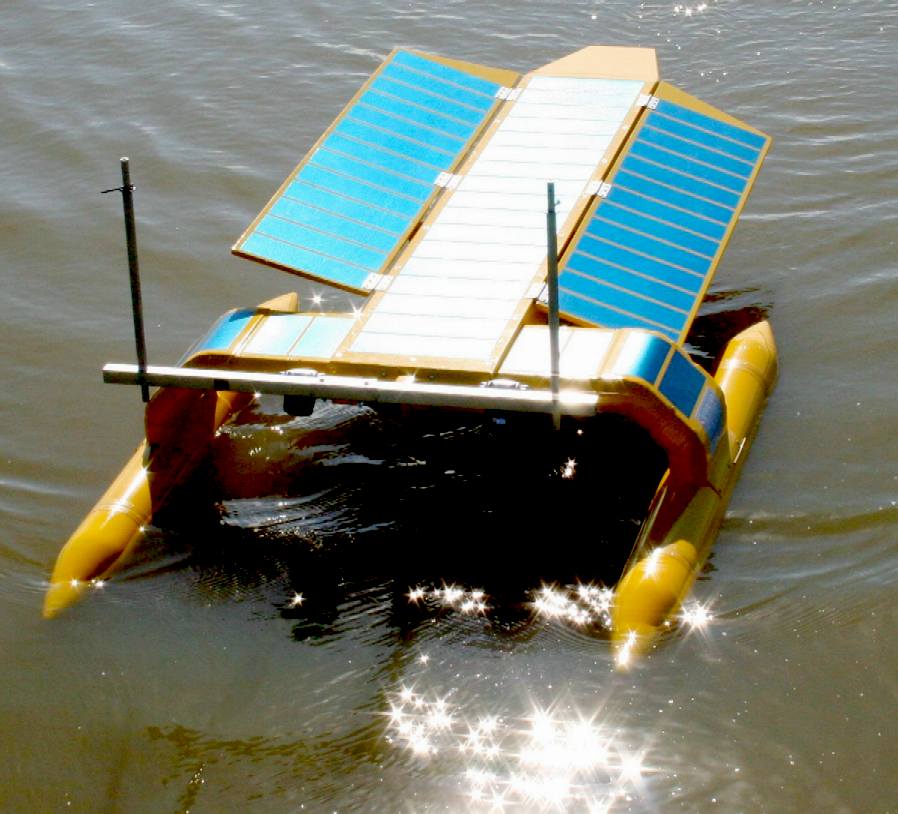

RIVERVAX™
TRIALS - Cost effective river pollution monitoring and cleaning all in
one. You have to think bigger. Anything less is a waste of time. It's
pointless trying to clean an large river with a teaspoon of a system. For
a big river a cleaning machine needs a big mouth. They don't come any
bigger than RiverVax.
INDIA - MINISTRY OF WATER
RESOURCES -
Ongoing Projects/Schemes & Contact Person
Accelerated Irrigation Benefits Programme (AIBP)
Major & Medium Irrigation Projects : Minor Irrigation Projects
Sh. Rajeev Kumar, SJC(SPR) -
011-23710131
Command Area Development (CAD)
Sh. J.R.Boro, SJC(SPR) -
011-23383090
Repair, Renovation & Restoration (RRR) of Water Bodies
Sh. Deepak Kumar, SJC(MI) - 011-23387834
Ganga Action Plan
Sh. Puskal Upadhyay, Director, NMCG - 011-24361074
Flood Management Programme
M. S. Sahare, SJC(FM) - 011-24392095
Externally Aided Projects
Sh. C.K.Rawat, DS(EA) - 011-23382448
Dam Rehabilitation and Improvement Project (DRIP)
Sh. Manoj Kumar, Deputy Director, CWC - manojkumar1-cwc@nic.in
Infrastructure Development
Sh. Banarsi Ram, DS(ID) - 011-23716747
POSTAL ADDRESS
626, M/o Water Resources
Shram Shakti Bhawan
Rafi Marg,
New Delhi – 110001
E-mail: egov-mowr@nic.in
Website: http://mowr.gov.in
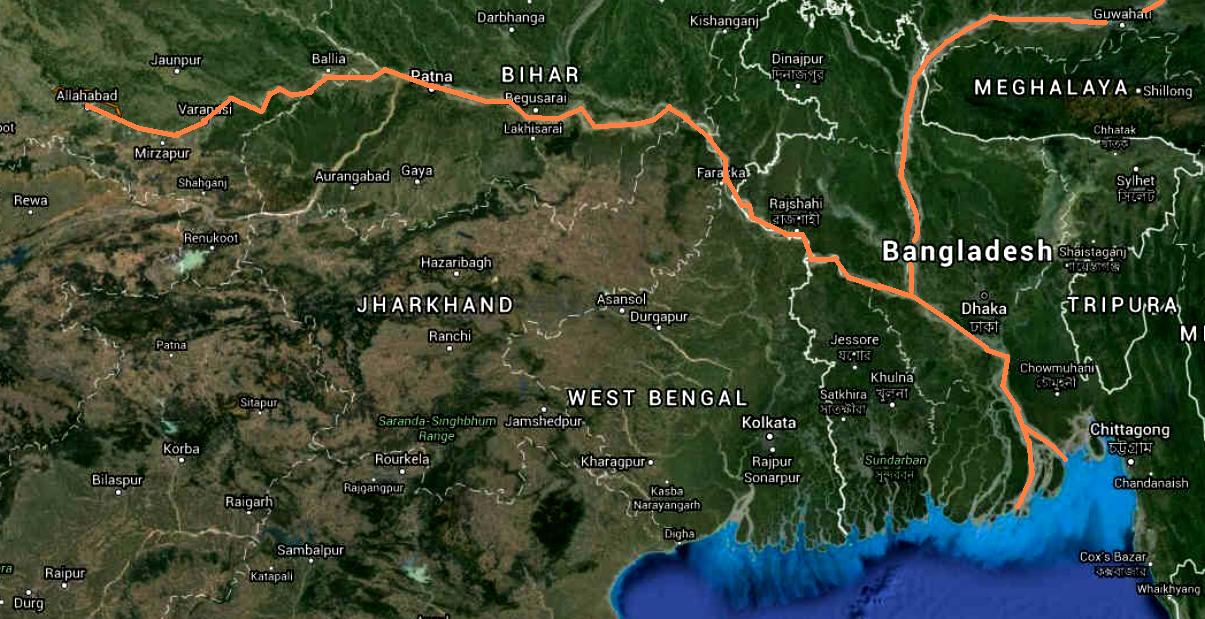
NAVIGABLE
WATERWAYS - The River Ganga basin lies between East longitudes 73°30 and 89° 0 and North latitudes of 22°30 and 31°30, covering an area of 1,086,000 sq km, extending over India, Nepal and Bangladesh. It has a catchment area of 8,61,404 sq. km in India, constituting 26% of the country's land mass and supporting about 43% of population (448.3 million as per 2001 census). particularly in the stretch between Kannauj and
Allahbad, according to figures from GAP in 1985.

INDIA - NATIONAL MISSION FOR CLEAN GANGA
National Ganga River Basin Authority (NGRBA) has started the Mission Clean Ganga with a changed and comprehensive approach to champion the challenges posed to Ganga through four different sectors, namely, of wastewater management, solid waste management, industrial pollution and river front development.
NGRBA has been established through the Gazette notification of the Government of India (Extraordinary) No. 328 dated February 20, 2009 issued at New Delhi with the objectives of (a) ensuring effective abatement of pollution and conservation of the river Ganga by adopting a river basin approach to promote inter-sectoral co-ordination for comprehensive planning and management; and (b) maintaining environmental flows in the river Ganga with the aim of ensuring water quality and environmentally sustainable development.
NGRBA is mandated to take up regulatory and developmental functions with sustainability needs for effective abatement of pollution and conservation of the river Ganga by adopting a river basin approach for comprehensive planning and management. The Ministry of Water Resources, River Development and Ganga Rejuvenation(MoWR, RD & GR) is the nodal Ministry for the NGRBA. The authority is chaired by the Prime Minister and has as its members the Union Ministers concerned, the Chief Ministers of the States through which Ganga flows, viz., Uttarakhand, Uttar Pradesh, Bihar, Jharkhand and West Bengal, among others. This initiative is expected to rejuvenate the collective efforts of the Centre and the States for cleaning the river.
NGRBA functions include development of a Ganga River Basin Management Plan, regulation of activities aimed at prevention, control and abatement of pollution, to maintain water quality and to take measures relevant to the river ecology in the Ganga basin states. It is mandated to ensure the maintenance of minimum ecological flows in the river Ganga and abate pollution through planning, financing and execution of programmes including that of –
1) Augmentation of Sewerage Infrastructure
2) Catchment Area Treatment
3) Protection of Flood Plains
4) Creating Public Awareness
NGRBA has been mandated as a planning, financing, monitoring and coordinating authority for strengthening the collective efforts of the Central and State governments for effective abatement of pollution and conservation of river Ganga so as to ensure that by the year 2020 no untreated municipal sewage or industrial effluent will flow into the river Ganga.
The NGRBA is fully operational and is also supported by the state level State Ganga River Conservation Authorities (SGRCAs) in five Ganga basin States which are chaired by the Chief Ministers of the respective States. Under NGRBA programme, projects worth Rs. 4607.82 crore have been sanctioned up to 31st March 2014.
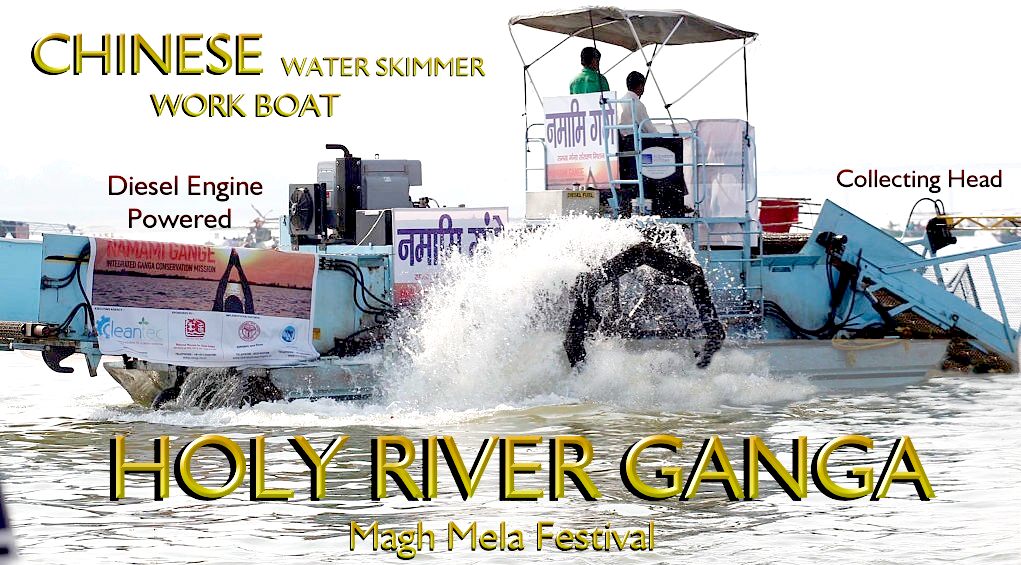
A
GREAT START
- Many countries are employing machines similar to that above from China
to clean up their rivers,
although there are of course manufacturers of similar machines around the
world.
It is an acknowledgement that there is a problem, demonstrating moves by local
water authorities to do something about it. The main drawback of
conventional machines is that they use diesel fossil fuels to pick up
plastic and other surface solids, so creating more pollution in terms of CO2
and nitrogen oxides than they might reasonably offset in recycling river waste - in other words diesel
powered cleaners are heating the planet more and contributing to acid oceans
in seeking to deal with our
dirty habits, where we have already heated the planet
to create the waste - and cannot afford to acidify our oceans more.
NGRBA
POWERS
& FUNCTIONS
According
to their website, the NGRBA has the power, combined with regulatory and developmental functions, to take all such measures and discharge functions as it deems necessary or expedient for effective abatement of pollution and conservation of the river Ganga in keeping with sustainable development needs. Such measures include
the following matters :-
a) Development of river basin management plan and regulation of activities aimed at prevention, control and abatement of pollution in the river Ganga to maintain its water quality, and to take such other measures relevant to river ecology and management in the Ganga Basin States.
b) Maintenance of minimum ecological flows in the river Ganga with the aim of ensuring water quality and environmentally sustainable development.
c) Measures necessary for planning, financing and execution of programmes for abatement of pollution in the river Ganga including augmentation of sewerage infrastructure, catchment area treatment, protection of flood plains, creating public awareness and such other measures for promoting environmentally sustainable river conservation.
d) Collection, analysis and dissemination of information relating to environmental pollution in the river Ganga.
e) Investigations and research regarding problems of environmental pollution and conservation of the river Ganga.
f) Creation of special purpose vehicles, as appropriate, for implementation of works vested with the Authority.
g) Promotion of water conservation practices including recycling and reuse, rain water harvesting, and decentralised sewage treatment systems.
h) Monitoring and review of the implementation of various programmes or activities taken up for prevention, control and abatement of pollution in the river Ganga, and
i) Issuance of directions under section 5 of the Environment (Protection) Act 1986 (29 of 1986) for the purpose of exercising and performing all or any of the above functions and to take such other measures as the Authority deems necessary or expedient for achievement of its objectives.
f) The Environment (Protection) Act, 1986 for the purpose of exercising and performing these functions and for achievement of its objectives.
National Mission for Clean Ganga (NMCG),a registered society under the Societies Registration Act, 1860,is the implementing wing of NGRBA
WHO IS WHO?
Shri N V Satish Seemakurti
- (Director (T-I)) 011-24367985 nvsatish@nmcg.nic.in
Shri Puskal Upadhyay - (Additional Mission Director) 011-24361074
pupadhyay@nic.in
Shri Hari Har Mishra
- (Director Finance) 011-24361073 mishrahh@nic.in
Shri L.B. Tuolte
- (Deputy Secretary) 011-24367985 tuolte.lb@nic.in
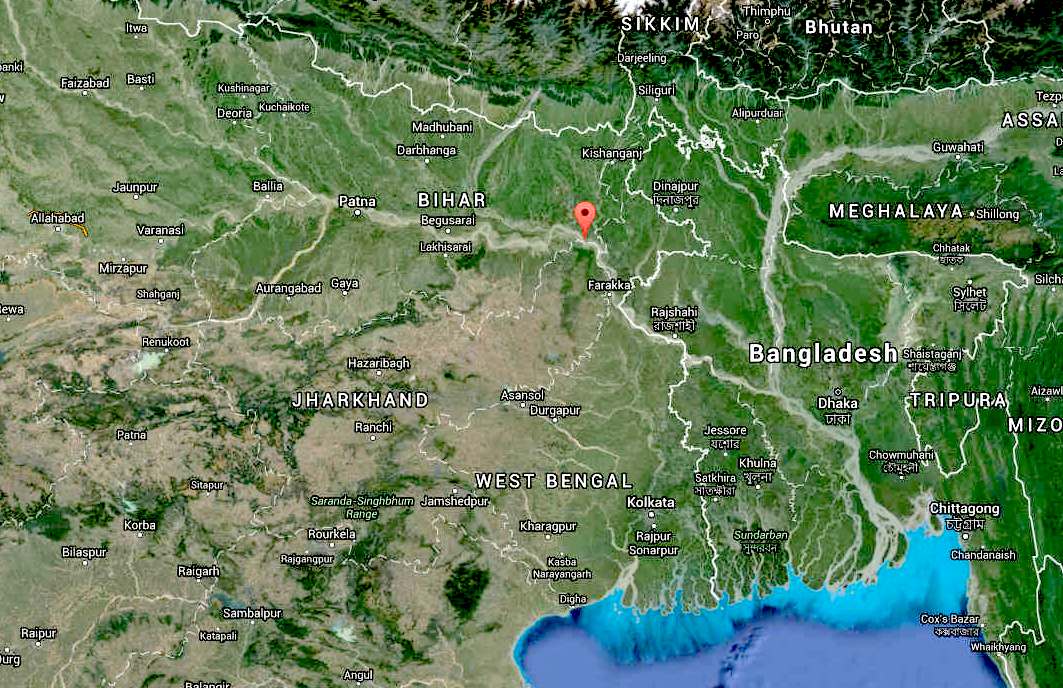
BAY
OF BENGAL - The Ganges River Pollution is now at such a high level that the amount of toxins, chemicals and other dangerous bacteria found in the river are now almost 3000 times over the limit suggested by the WHO as 'safe'.
The river directly and indirectly affects the largest population of any river in the world with over more than 420 million people who rely on it for food, water, bathing and agriculture. And that is not to mention the tens of Millions of pilgrims who venture to India's most holy of rivers each year to bathe and worship.
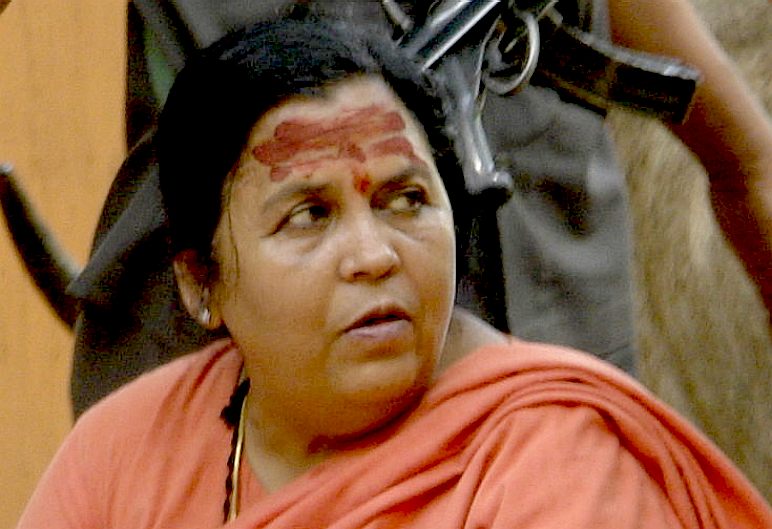
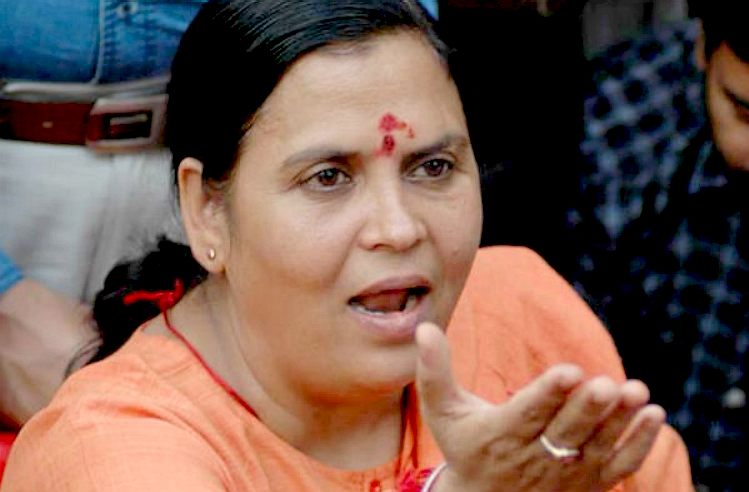
WIKIPEDIA -
Uma Bharti (born 3 May 1959) is an Indian politician and cabinet minister for water resources, river development and Ganga rejuvenation in the Union Government of India. Raised by Vijaya Raje Scindia of Gwalior, she became involved with the Bharatiya Janata Party (BJP) at a very young age, unsuccessfully contesting her first Parliamentary elections in 1984. In 1989, she successfully contested the Khajuraho seat, and retained it in elections conducted in 1991, 1996 and 1998. In 1999, she switched constituencies and won the Bhopal seat. Bharati held various state-level and cabinet-level portfolios in the Ministry of Human Resource Development, Tourism, Youth Affairs & Sports, and Coal & Mines during the second as well as third ministry of Prime Minister Atal Bihari Vajpayee.
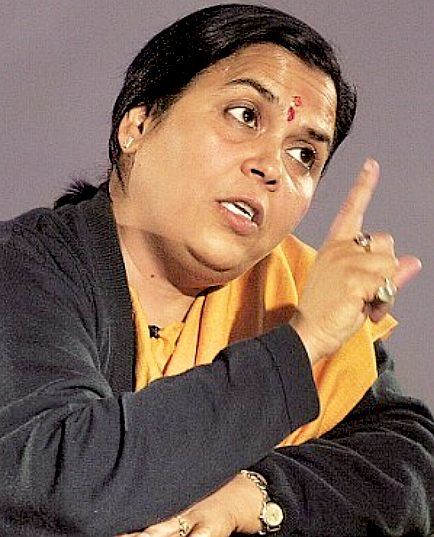
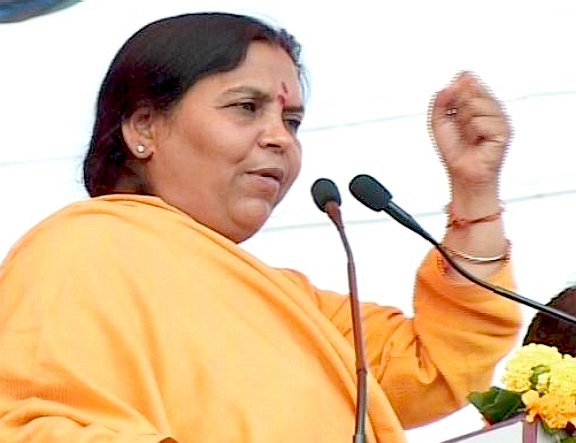
WIKIPEDIA -
She is occasionally addressed by the Hindu honorific Sādhvī, a respectful Sanskrit title for a female renunciant.
Bharti was one of the most prominent leaders in the controversial Ram Janmabhoomi movement of the 1980s and 1990s, organised by the BJP and the Vishva Hindu Parishad. She was present at the demolition of the Babri Masjid.
In the 2003 Assembly polls, she led the BJP to a three-fourths majority in the Madhya Pradesh Vidhān Sabhā (Madhya Pradesh Legislative Assembly). She defeated her Congress opponent from the Malehra seat by a 25% margin. She resigned from the post of Chief Minister in August 2004, when an arrest warrant was issued against her regarding the 1994 Hubli riot case.
On 16 May 2014, she was elected to the Lok Sabha from Jhansi constituency by defeating Chandrapal Yadav of the Samajwadi Party. On 26 May 2014, she was appointed by newly elected Prime Minister, Narendra Modi as the Minister for Water Resources, River Development and Ganga Rejuvenation in his cabinet.

CONTACTS
Ministry of Water Resources, River Development & Ganga Rejuvenation
Rear Wing, 3rd
Floor
MDSS Building
9,CGO Complex
Lodi
Road
New Delhi-110003
Telephone: +91-011-24367984-85-86-87
+91_11-24321530
Fax:
+91-011-24367988
E-mail ID: admn.nmcg@nic.in
Toll Free Number: 1800-11-2838
THE CLEAN GANGA FUND
Features of the Fund
* Open to all – domestic as well as international (NRI & PIO)
*
First time an independent trust with eminent people leading it
*
Donation would be recognized
*
More than resource mobilization, this fund will help bring innovation and technological know-how and
connect you with this national cause.
Individuals, Corporates, Institutions can participate in the following:
*
Adopt Ghats
*
Pilot New Technologies
*
Conduct Research
*
Get involved with creating awareness
cleangangafund@gov.in
CONTRIBUTE TO THE FUND
DD/Cheque in favor of ‘Clean Ganga Fund’
For Electronic Transfer: Account Number: 34213740838
Branch: State Bank of India, New Delhi Main Branch
IFSC Code: SBIN 0000691 Swift Code: SBININBB104.
https://nmcg.nic.in/
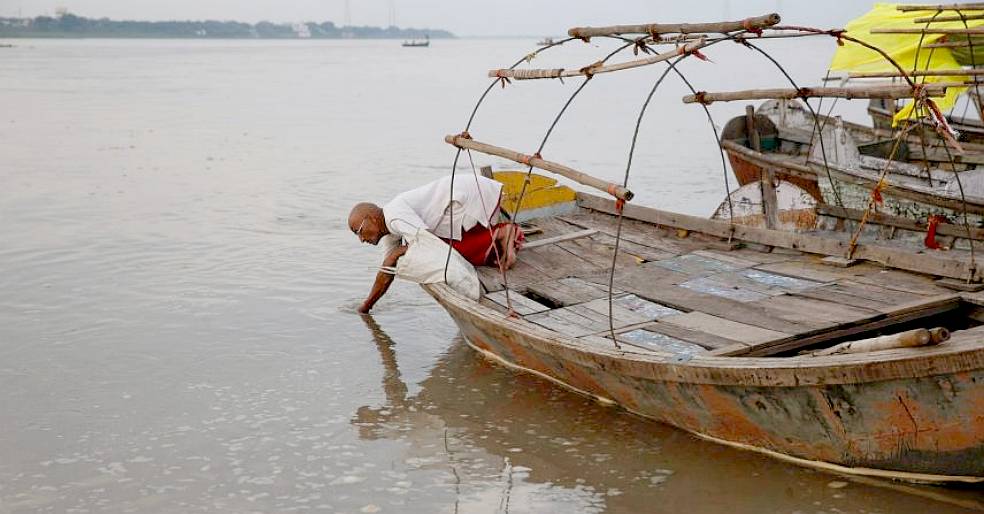
HOLY
MOTHER
GANGA -
Some of the main Ganges river pollution contributors are those in industry - specifically in this case those of the leather industry who use vast amounts of chromium and other toxins and chemicals.
The world bank
had agreed to loan India almost $1 Billion to clean up the Ganges, but so
far the impact is not that visible.
MINISTRY
OF WATER LINKS
-
Home
-
Who's
Who
-
Tenders
-
Vacancies
-
Media
-
e-office
-
RTI
-
Citizen
Charter
-
NPS
-
Photo
Gallery
-
Minister's
Corner
-
About
the Ministry
-
Jal
Manthan - 2
-
Water
the Resource
-
Organisations
-
Ganga
Rejuvenation
-
Inter
Linking of Rivers
-
PMKSY
-
e-Book
-
Jal
Kranti Abhiyan
-
Irrigation
Management Programme
-
Ongoing
Projects/Schemes
-
Presentations
/ Workshops
-
Programmes
and Schemes
-
International
Cooperation
-
Inter-State
Water Disputes
-
India-WRIS
-
National
Water Policy
-
National
Mission for Clean Ganga
-
National
Water Mission
-
India
Water Week
-
R
and D Programme in Water Sector
-
Guidelines
-
Budget
-
Minor
Irrigation Census
-
Publications
-
Controller
of Accounts
-
Water
Related Issues
-
Gazette
Notifications
-
Orders
-
Parliament
Questions
-
Kid's
corner - Water Conservation
-
Report
of IMG - Arsenic Mitigation
-
Approval
to Namami Gange - Integrated Ganga Conservation Mission
/ Programme
-
e-Book
on Minutes of Meeting chaired by Hon'ble Minister (WR,
RD & GR) on 20.06.2015
-
Highlights
of Bhujal Manthan organized at Kurukshetra University on
21.08.2015
-
Amendment
of Recruitment Rules for the Statutory Posts in
Brahmaputra Board, Guwahati
-
Online
Competition for Jingle Composition
-
Draft
of Recruitment Rule for the post of Director, NERIWALM,
Tezpur, Assam
-
Programme
Outline of Workshop on Lessons Learnt from Dam
Rehabilitation & Improvement Project
-
Message
on "Hindi Divas"
-
Winners
of 5th National Painting Competition
-
India
Water Week 2016
-
Amendment
of Recruitment Rules for the post of Principal,
Vice-Principal, PGT, TGT & Primary Teacher of
Farakka Barrage Project Higher Secondary School
-
Amendment
of Recruitment Rules for the post of Additional Director
in Central Water & Power Research Station, Pune
-
Draft
proposal for Amendment of Recuritment Rules for the post
of Senior Private Secretary & Private Secretary in
GFCC
-
Participation
of MoWR, RD & GR at IITF 2015
-
Workshop
on Lessons Learnt from Dam Rehabilitation &
Improvement Project (DRIP) in New Delhi on 18.02.2016
-
Central
Water Commission
-
Central
Ground Water Board
-
CW&PRS
-
Water
Quality Assessment Authority
-
Comprehensive
Mission Documents for NWM - Vol.1
-
Comprehensive
Mission Documents for NWM - Vol.2
-
Tera
Mera Mat Kar
-
BACHA
BACHA KE
-
Rain
Drops are falling
-
Barso
Re
-
Exchange
of Agreement between WAPCOS and Government of Tanzania
for Water Supply Projects from Lake Victoria
-
Brahmaputra
Boards
-
WAPCOS
Limited
-
National
Institute of Hydrology
-
National
Water Development Agency
-
National
Projects Construction Corporation Ltd
-
Upper
Yamuna River Board
-
Sardar
Sarovar Construction Advisory Committee
-
Narmada
Control Authority
-
Central
soil and Material Research Station
-
Central
Water Commission
-
Ganga
Flood Control Commission
-
Central
Water and Power Research Station
-
Central
Ground Water Board
-
Water
Quality Assessment Authority
-
Ministry
of Drinking Water
-
Andhra
Pradesh
-
Assam
-
Bihar
-
Chhattisgarh
-
Goa
-
Gujarat
-
Himachal
Pradesh
-
Haryana
-
Training
Programmes
-
Grievances
Redress
-
Downloads
-
Public
Grievances
-
Terms
& Conditions
-
Privacy
Policy
-
Accessibility
Statement
-
Archives
-
FeedBack
-
Contact
Us
-
Disclaimer
|
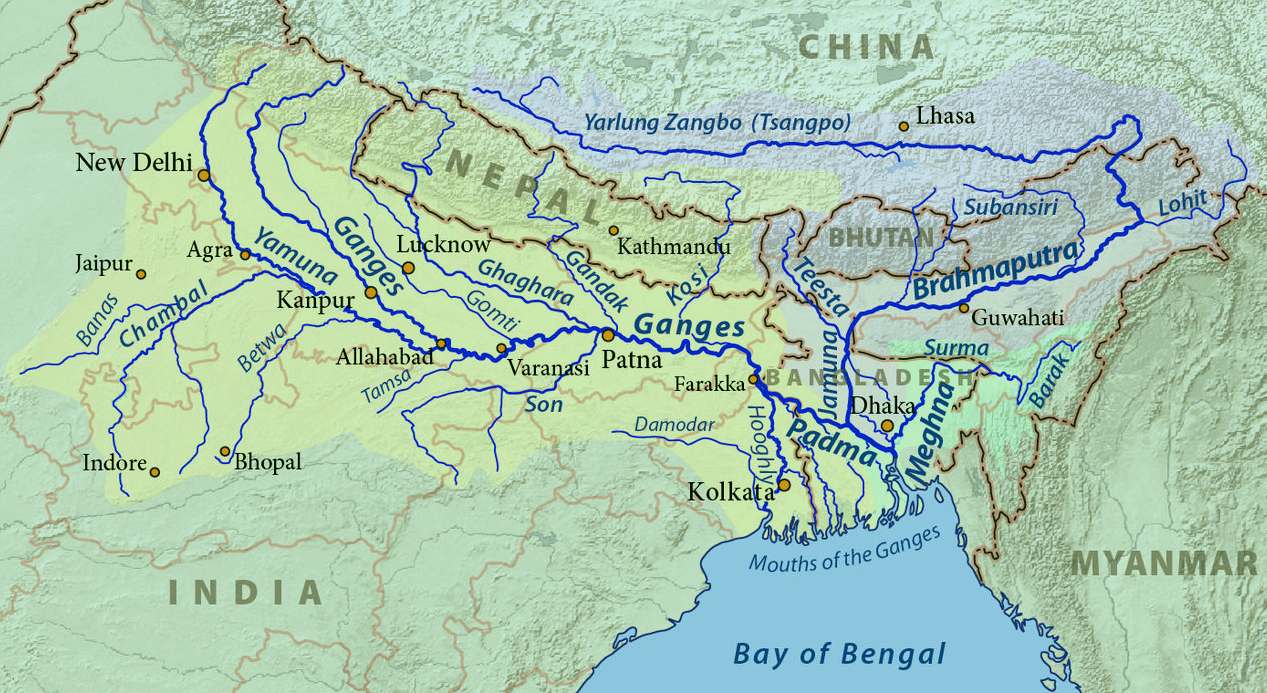
GEOGRAPHY
- The
Ganges is navigable for at least 1,350 kilometers before exits into the Bay of
Bengal.
ACIDIFICATION
- ADRIATIC
- ARCTIC
- ATLANTIC - BALTIC
- BAY BENGAL - BERING
- CARIBBEAN - CORAL - EAST
CHINA
ENGLISH CH
-
GOC - GUANABARA
- GULF
GUINEA - GULF
MEXICO
- INDIAN
-
IOC
-
IRC - MEDITERRANEAN -
NORTH SEA - PACIFIC
- PERSIAN GULF -
RED
SEA - SEA
JAPAN - STH
CHINA - PLASTIC
- PLANKTON - PLASTIC
OCEANS - SEA
LEVEL RISE - UNCLOS
- UNEP
- WOC
- WWF
AMAZON
- BURIGANGA - CITARUM - CONGO - CUYAHOGA -
GANGES - IRTYSH
- JORDAN - LENA -
MANTANZA-RIACHUELO
MARILAO
- MEKONG - MISSISSIPPI - NIGER - NILE -
PARANA - PASIG - SARNO - THAMES -
YANGTZE - YAMUNA - YELLOW
LINKS
& REFERENCE
Wikipedia
Bay_of_Bengal IB
Times
India million litres untreated sewage polluting holy river ganga says report Inspired
Economist 2015/01/14 India uses zero liquid discharge technology for Ganges
river Haaretz
Israel Ganga pollution news science Central
Pollution Control Board of India Hubpages
politics what are the 10 Most Polluted Rivers in the World DN
India
report Prime Minister Narendra Modi calls for swift action to stop pollution
of river ganga NDTV
India
news Germany keen to advise assist for Ganga river clean up Project
Smile India Wordpress 2010 July effects of water pollution solutions Wikipedia
Ministry_of_Water_Resources India Economic
Times India 2014 August 20 news Ganga rejuvenation water resources Yamuna
river https://nmcg.nic.in/ MOWR
Bangladesh India
official government website ministry water resources Clean
Ganga Fund Wikipedia
Uma_Bharti Ministry
Water Resources India https://en.wikipedia.org/wiki/Uma_Bharti
http://www.cleangangafund.com/ https://india.gov.in/official-website-ministry-water-resources-0 http://www.mowr.gov.bd/ http://articles.economictimes.indiatimes.com/2014-08-20/news/53029110_1_ganga-rejuvenation-water-resources-yamuna-river https://en.wikipedia.org/wiki/Ministry_of_Water_Resources_%28India%29 https://projectsmileindia.wordpress.com/2010/07/01/effects-of-water-pollution-solutions/ http://www.ndtv.com/india-news/germany-keen-to-advise-assist-india-for-ganga-river-clean-up-608470 http://www.dnaindia.com/india/report-prime-minister-narendra-modi-calls-for-swift-action-to-stop-pollution-of-river-ganga-2050200
http://www.austroindonesianartsprogram.org/blog/most-polluted-river-world-citarum-river-indonesia
http://hubpages.com/politics/What-Are-the-10-Most-Polluted-Rivers-in-the-World
http://inspiredeconomist.com/2015/01/14/india-uses-zld-ganges-river/
http://www.ibtimes.co.uk/india-million-litres-untreated-sewage-polluting-holy-river-ganga-says-report-1491715
https://en.wikipedia.org/wiki/Bay_of_Bengal
|











